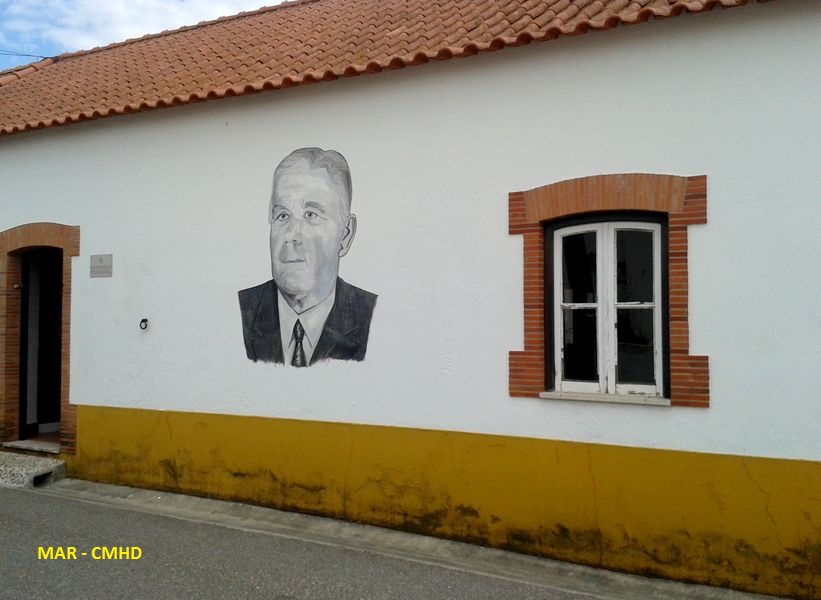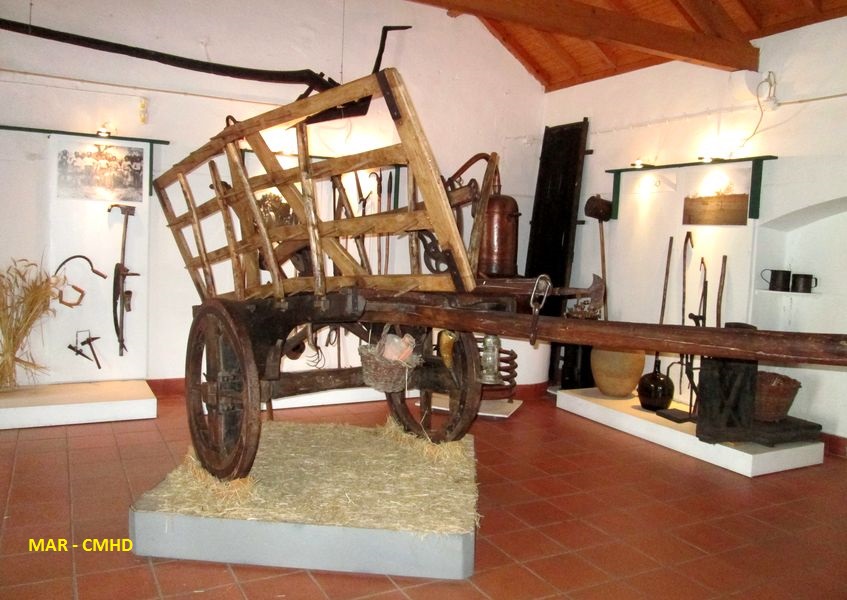&nbps
Share Image
In Riachos village (Riachos means creeks), 6 km from the city of Torres Novas - is this Agricultural Museum, opened in 1989, with a representative collection of the rural way of life for those who live and lived there. The press and the threshing floor, the agriculture tools and machinery, the typical house, costumes and traditional arts and crafts stand out in the context of its ethnographic collection.
The Museu Agrícola de Riachos (Agricultural Museum of Riachos) and the folkloric group “Os Camponeses” (the peasants), one of the most known in the region, and the traditional singing group “As Camponesas” (the women peasants), have a relevant community and socio-cultural role, being the most notorious flags of culture of these industrious people.
Although the place of Castelo Velho on the left bank of Almonda River, south of Riachos, has evidences of Roman occupation and carved stones from the Middle Paleolithic, it is thought that the Riachos probably had its origin in the early decades of the 16th century thanks to the determination of scattered houses, resulting from the fixing of agricultural workers in Almonda fields.
-
Riachos’ Agricultural Museum
-
In Riachos village (Riachos means creeks), 6 km from the city of Torres Novas - is this Agricultural Museum, opened in 1989, with a representative collection of the rural way of life for those who live and lived there. The press and the threshing floor, the agriculture tools and machinery, the typical house, costumes and traditional arts and crafts stand out in the context of its ethnographic collection.
The Museu Agrícola de Riachos (Agricultural Museum of Riachos) and the folkloric group “Os Camponeses” (the peasants), one of the most known in the region, and the traditional singing group “As Camponesas” (the women peasants), have a relevant community and socio-cultural role, being the most notorious flags of culture of these industrious people.
Although the place of Castelo Velho on the left bank of Almonda River, south of Riachos, has evidences of Roman occupation and carved stones from the Middle Paleolithic, it is thought that the Riachos probably had its origin in the early decades of the 16th century thanks to the determination of scattered houses, resulting from the fixing of agricultural workers in Almonda fields.
-
Lisboa e Vale do Tejo
-
Torres Novas
-
Paul do Boquilobo Nature Reserve
-
Associação para a Defesa do Património Histórico e Natural da Região de Riachos
Identification and Access
-
Access coming from:
- Golegã (± 6.2 km) by N243; or
- Torres Novas (± 6.6 km) – by N3 and N243 to Riachos.
GPS: 39.442962, -8.512612
Contacts, Schedules and other informations
-
Museum
-
Museu Agrícola de Riachos
Rua Dr. José Marques, 14
2350-362 Riachos
Phone: (00351) 249 820 499 I 934 133 079
E-mail: museuagricoladeriachos@gmail.com
-
Consulte o site
-
See the website
-
See the website
-
No










